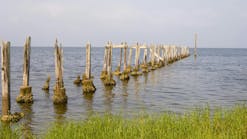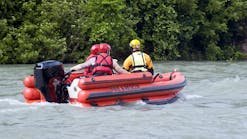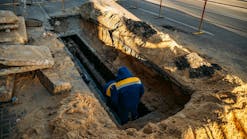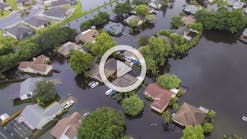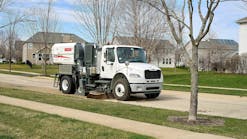To a team of investigators working at the end of an old country lane here, the bacteria and viruses floating in their water samples can now be as incriminating as a bad check or a bullet case at a crime scene.
According to a report in the Asbury Park Press, scientists with the New Jersey Department of Environmental Protection say they can test water from oceans, bays and rivers and know right away when pollution is coming from a leaky sewer pipe or other human source — the most critical information for assessing public health risk from swimming or eating shellfish.
"Before, the bacteria levels would throw a red flag up," explained environmental specialist Bruce Hovendon, as he stood outside the "clean room" where he analyzes viruses. "But no one would know if it was human or animal."
New advanced microbiology laboratory will help scientists watch for leaks from the shore's regional sewer systems, and advance their next frontier — mapping sources of polluted storm water that pose the biggest threat to coastal waters.
"We've gone about as far as we can with controlling wastewater pollution. This new lab is really going to help us tackle the next problem, which is nonpoint source pollution," said Robert Connell, chief of the DEP's Bureau of Marine Water Monitoring.
One project is the upper Navesink River in Monmouth County, where the bureau is tracking down pollution that has forced the closure of some shellfish areas, said Eric Feerst, the bureau's section chief.
"Every estuary is unique," said Feerst, who explained how the team started by looking at digital landscape maps. "On the upper Navesink, around the Swimming River reservoir, at one time it had a lot of horse farms. But now that's diminished, and it's mostly residential."
That shift away from agriculture changed the pollution profile too, Feerst said. Investigators are now seeing pollution from suburban development, and probably some leaking sewer pipes west of the Route 35 bridge at Red Bank, he said.
The water bureau's forensic work already is helping to clean up Barnegat Bay on the west side of Seaside Heights and Ortley Beach. Tests helped state and local officials trace periodic bouts of pollution to two stormwater pipes; work is ongoing to find and disconnect improper sanitary sewer tie-ins to the pipes, according to the DEP.
All warm-blooded animals and humans carry coliform bacteria in their digestive tracts, so the bacteria has long been a broad indicator for pollution. One trick for determining the exact source is the Multiple Antibiotic Resistance test, checking bacteria for resistance to antibiotics, Hovendon said.
"If I see a high resistance and I find it's a human antibiotic, I can assume it's a human source," Hovendon said. In contrast, coliform from animals — say, the Shore's ubiquitous Canada geese — will show low antibiotic resistance, he said.
Along with biological and chemical testing, the bureau is getting into remote sensing, using buoys, aircraft and even robotic submarines to monitor the bays and ocean. Rutgers University is loaning the DEP use of its Slocum electric gliders, long-ranging submersible probes that transmit data by satellite link, according to Scott Glenn, an oceanography professor with the university's Institute of Marine and Coastal Science.
For the DEP's purposes, undersea gliders will carry a sensor to measure dissolved oxygen in ocean water — a critical indicator that can warn of algae blooms that can cause fish kills.
"A glider can cover the whole coast south to Cape May in about five days," said Robert Schuster, a senior environmental specialist with the water bureau. Over Barnegat Bay, bureau workers team with the state Forest Fire Service air wing based at Coyle Field in Burlington County. They're flying missions in a single engine Cessna carrying a hyperspectral sensor to measure levels of chlorophyll in the bay waters, a measure of algae activity that can be fed by nutrient pollution.
The new lab cost $191,000, including equipment, and can handle all the state's water testing needs, said Leslie McGeorge, the DEP's administrator for water monitoring and standards.
Source: APP

